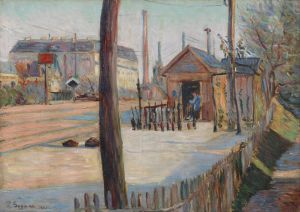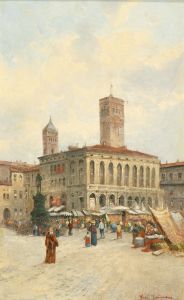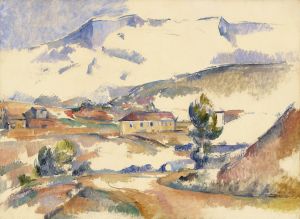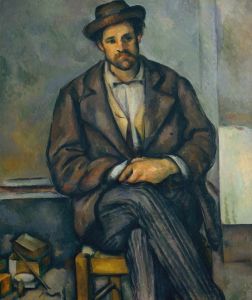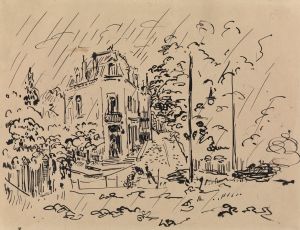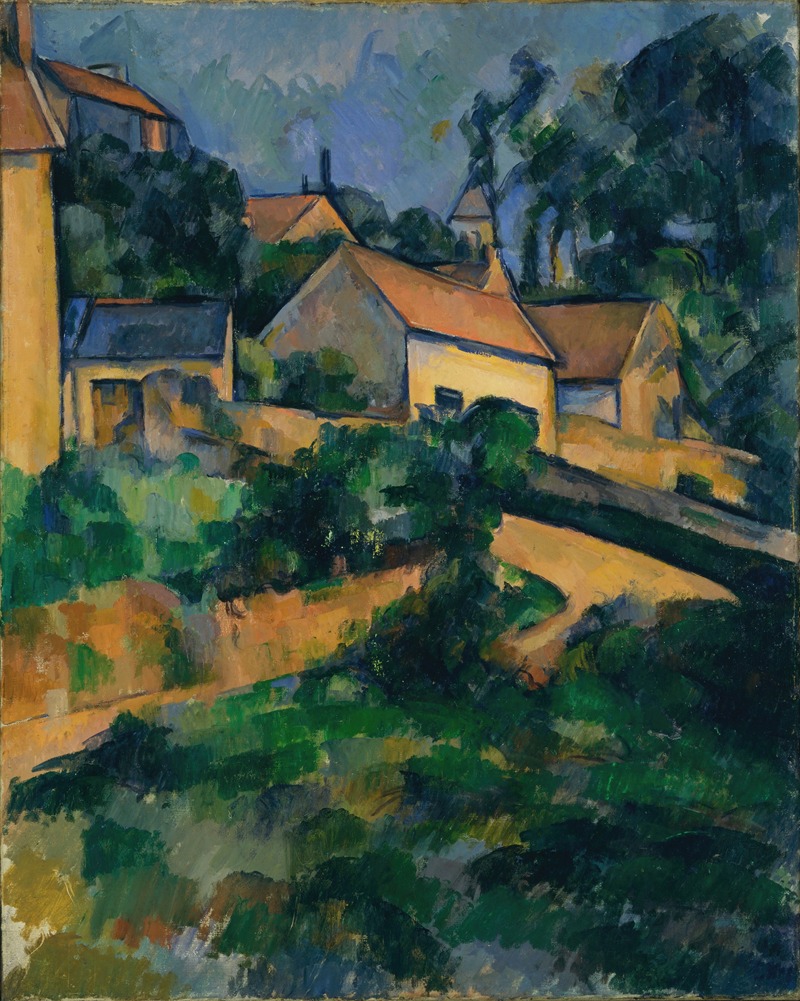
Turning Road at Montgeroult
A hand-painted replica of Paul Cézanne’s masterpiece Turning Road at Montgeroult, meticulously crafted by professional artists to capture the true essence of the original. Each piece is created with museum-quality canvas and rare mineral pigments, carefully painted by experienced artists with delicate brushstrokes and rich, layered colors to perfectly recreate the texture of the original artwork. Unlike machine-printed reproductions, this hand-painted version brings the painting to life, infused with the artist’s emotions and skill in every stroke. Whether for personal collection or home decoration, it instantly elevates the artistic atmosphere of any space.
"Turning Road at Montgeroult" is a landscape painting by the renowned French Post-Impressionist artist Paul Cézanne. Created in 1898, this work is an exemplary piece that showcases Cézanne's innovative approach to form and color, which significantly influenced the development of modern art in the 20th century.
Paul Cézanne, born on January 19, 1839, in Aix-en-Provence, France, is often credited with bridging the gap between Impressionism and Cubism. His work laid the groundwork for the transition from 19th-century artistic concepts to a new and radically different world of art in the 20th century. Cézanne's exploration of geometric simplification and optical phenomena inspired artists like Pablo Picasso and Georges Braque, who later pioneered Cubism.
"Turning Road at Montgeroult" is one of Cézanne's later works, painted during a period when he was increasingly focused on capturing the essence of the French landscape. The painting depicts a rural scene in Montgeroult, a small commune in northern France. This locale provided Cézanne with a serene environment to explore his artistic ideas away from the bustling city life.
The composition of "Turning Road at Montgeroult" is characterized by its dynamic use of color and form. Cézanne employs a palette of earthy tones, with greens, browns, and blues dominating the canvas. The painting captures a winding road that leads the viewer's eye into the depth of the landscape, flanked by lush trees and foliage. Cézanne's brushwork is deliberate and methodical, with each stroke contributing to the overall structure of the scene. This technique reflects his belief in the importance of order and stability in art, contrasting with the more spontaneous approach of the Impressionists.
Cézanne's treatment of space and perspective in this painting is particularly noteworthy. He eschews traditional linear perspective, opting instead for a more flattened, abstract representation of the landscape. This approach allows him to emphasize the geometric forms inherent in nature, a hallmark of his mature style. The painting's composition is carefully balanced, with the road serving as a central axis that divides the canvas into distinct yet harmonious sections.
"Turning Road at Montgeroult" exemplifies Cézanne's mastery of capturing the interplay between light and shadow. The dappled sunlight filtering through the trees creates a sense of movement and vitality, enhancing the painting's overall dynamism. This attention to light and its effects on color and form is a testament to Cézanne's deep understanding of the natural world and his ability to translate it onto canvas.
Today, "Turning Road at Montgeroult" is celebrated as a significant work in Cézanne's oeuvre, reflecting his innovative approach to landscape painting. It is housed in the Museum of Modern Art in New York City, where it continues to be admired by art enthusiasts and scholars alike. The painting remains a testament to Cézanne's enduring influence on the trajectory of modern art, illustrating his unique ability to capture the timeless beauty of the natural world through his distinct artistic vision.





